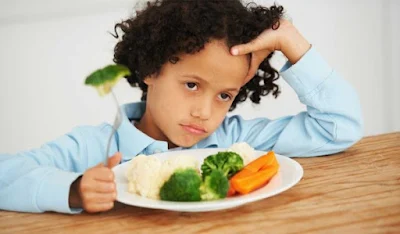In the following article, we will talk about one of the health problems that children suffer from, which is underweight in children. Avoid the classic mistakes made by parents. It is possible to note that many nutritional problems in children and adolescents stem primarily from parents’ mistakes.
We do it without awareness or intention. Follow a shared meal system, meaning making sure to eat with the child during the meal, as family meals may increase the amount of food consumed. Commitment to physical activity. If you provide healthy food to the child after practicing physical activity, he will eat it. Do not tempt children with sweets. Allow the child to choose, that is, consult him regarding the types of vegetables he prefers or which type of cheese he prefers to buy from the dairy products section, and so on for the rest of the purchases. Use nutritional supplements. If there is a deficiency in vitamins, they should be supplemented with specific nutritional supplements recognized and approved by the Ministry of Health. The most important of these supplements are: - Vitamin B. Iron: Iron deficiency can lead to anemia, fatigue, and inability to concentrate. Calcium deficiency can lead to bone diseases and other autoimmune diseases. A deficiency of zinc leads to a decrease in appetite and lack of eating. Ensure that he does not suffer from any other cognitive or developmental problems. Ensure that there are no behavioral or educational problems. Verify whether the weight loss stems from lack of eating and that there is no special medical problem, such as: diabetes, or an allergy to a specific food such as lactose or gluten. Ensure that the child does not suffer from obstructive bowel diseases, irritable bowel syndrome, prolonged diarrhea, and the like.
In this explainer, we will learn how to identify the reactants and products of aerobic respiration, and explain the importance of respiration for living organisms. When you hear the word “breathing,” you might first think about how you inhale and exhale. The lungs absorb oxygen from the air and release carbon dioxide, which our bodies produce as waste during a process called pulmonary respiration. But why do we need all this oxygen? Where does this carbon dioxide come from? The answer to these two questions is the process of aerobic cellular respiration, a chemical reaction that is not similar to pulmonary respiration, although the two are related. Our bodies are made up of cells, and each of these many cells needs energy to do its job. The work a cell does varies based on its type. Some cells need energy to move, most need energy to divide, and some cells use energy to communicate with each other. Cells need energy to do all the basic functions that keep us alive, such as moving our bodies and digesting food. Cellular respiration provides the energy these cells need to carry out their functions. In eukaryotic cells, such as those that make up our bodies, cellular respiration is a function of mitochondria.
All living organisms use a form of cellular respiration that breaks down nutrients to release and then store energy. In humans, energy is usually released from a sugar called glucose and transferred to a molecule called adenosine triphosphate (ATP). You can see the chemical structure of the ATP molecule below. Note that it consists of the nitrogenous base adenine, the five-carbon sugar ribose, and three phosphate groups. You can see this in Figure 1 below. Glucose is a nutrient we get from food. Adenosine triphosphate, also known as ATP, is the molecule that provides energy for almost all cellular processes in most living organisms. Cellular respiration is a complex chemical process in which nutrients and other molecules are broken down in order to release energy. The energy released in this process is transferred to a molecule called adenosine triphosphate (ATP). Aerobic respiration in humans requires the availability of glucose. Where does glucose come from? Glucose is a particularly important nutrient for humans because it is a reactant of cellular respiration. Glucose is necessary for our cells to function, as is the other reactant in cellular respiration, oxygen.
Unlike plants, which can produce glucose through photosynthesis, animals like humans cannot make glucose on their own. Instead, we get glucose from the food we eat. This food is broken down into its basic components during digestion and absorbed into the bloodstream. Blood transports glucose to cells that use it in cellular respiration. Hence, the glucose needed for cellular respiration comes from the food a person eats. Glucose is not the only component required for cellular respiration. Our bodies also use the oxygen we breathe through our lungs during this process. Because cells need oxygen to perform cellular respiration, we call it “aerobic” cellular respiration. The word “aerobic” means “it contains oxygen.” Since both glucose and oxygen are required for cellular respiration, we call them “reactants.” “Aerobic” is a word that describes a process that involves oxygen. Oxygen molecules and glucose molecules rearrange in a process in which energy is released. Eventually, these molecules turn into carbon dioxide and water molecules.
We call these molecules “products.” As it results from interaction. Carbon dioxide produced by cellular respiration is expelled from our bodies through our lungs when we exhale. The water produced is largely recycled by the cell, but any excess will be removed from the body as waste. Most of the energy released during aerobic respiration is transferred in ATP molecules. Some of the excess energy is released as heat. A chemical reaction that releases energy is called an exothermic reaction. Exothermic reactions need an initial input of energy to occur, but the products have less stored energy than the reactants, which means there is an overall loss of energy in the process. “Exothermic reactions” are electrolytic reactions



No comments:
Post a Comment